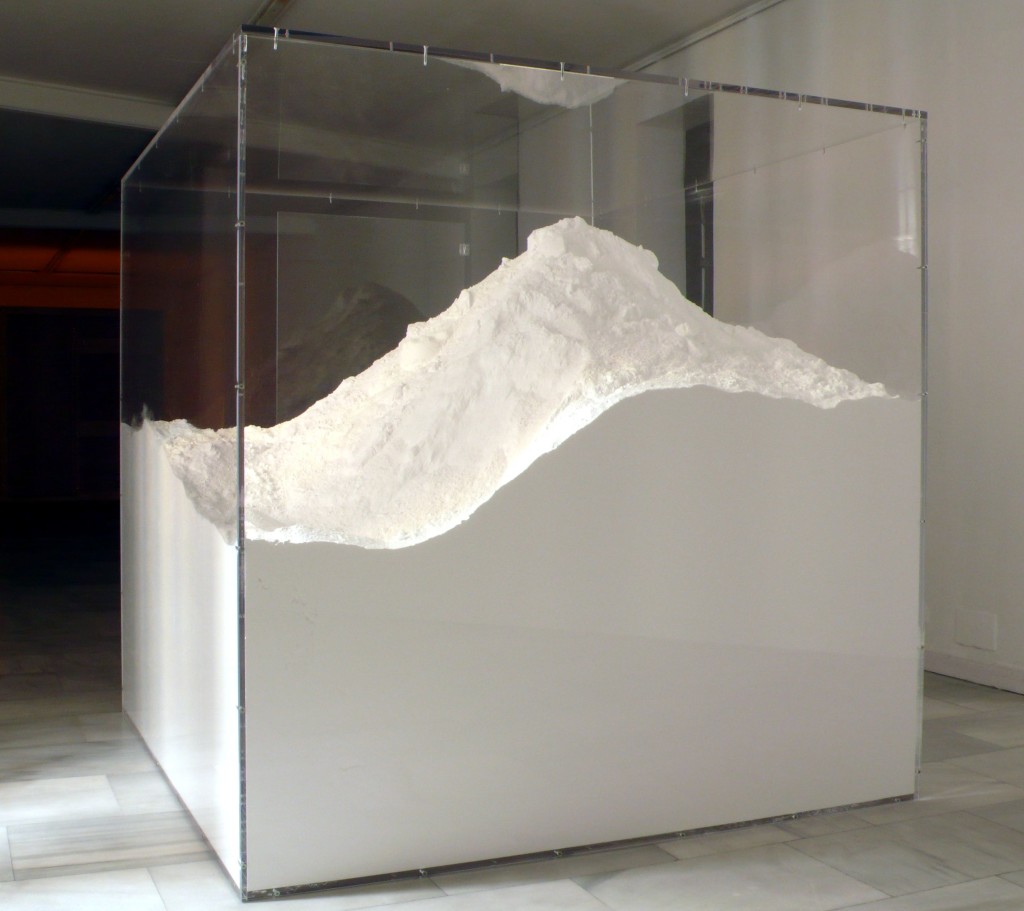Madrid , 2013
ROOM TO FORGET
Room full of metyrapone, a drug that erases specific memories of soldiers and victims of war
Glass and metyrapone
200 x 200 x 200 cm
Room to Forget is a glass-encased room for the Maison de la Paix (House of Peace), intended to erase the memories of soldiers and victims of war. The powder inside is metyrapone, a drug that erases specific memories. The room is a cube measuring 3.20 metres, and the best location for it would be in the lobby.
The Maison de la Paix campus is home to the Graduate Institute of International and Development Studies that focuses on past, present and future conflict zones. Conflicts have a human side that we cannot forget. The Room to Forget will erase the psychological consequences of conflicts.
‘These conflicts damage people’s lives because of the increasing fears, bad sleep, traumas, isolation and shame,’ Alicia Framis explains. ‘With this spatial installation I not only want to address the consequences of economics, war situations and conflicts, but also the psychological damage of these conflicts.
The Room to Forget has a sequel that consists of a performance called Erasing Memories. This is an ongoing work that will involve me visiting places where massacres have taken place throughout history. At these spots I want to scatter the metyrapone and ask the inhabitants of the place in question to help me with this action. I see it as a collective performance and it will therefore become more of a living sculpture.
The Room to Forget exists by itself without this performance, but I think the performance brings the work to life and in a way the work will then exist beyond the building and around the world, connecting the Maison de la Paix building in Geneva with the whole world.’

Room to Forget is a glass-encased room for the Maison de la Paix (House of Peace), intended to erase the memories of soldiers and victims of war. The powder inside is metyrapone, a drug that erases specific memories. The room is a cube measuring 3.20 metres, and the best location for it would be in the lobby.
The Maison de la Paix campus is home to the Graduate Institute of International and Development Studies that focuses on past, present and future conflict zones. Conflicts have a human side that we cannot forget. The Room to Forget will erase the psychological consequences of conflicts.
‘These conflicts damage people’s lives because of the increasing fears, bad sleep, traumas, isolation and shame,’ Alicia Framis explains. ‘With this spatial installation I not only want to address the consequences of economics, war situations and conflicts, but also the psychological damage of these conflicts.
The Room to Forget has a sequel that consists of a performance called Erasing Memories. This is an ongoing work that will involve me visiting places where massacres have taken place throughout history. At these spots I want to scatter the metyrapone and ask the inhabitants of the place in question to help me with this action. I see it as a collective performance and it will therefore become more of a living sculpture.
The Room to Forget exists by itself without this performance, but I think the performance brings the work to life and in a way the work will then exist beyond the building and around the world, connecting the Maison de la Paix building in Geneva with the whole world.’